Roche ISE 9180 User manual
- Category
- Measuring, testing & control
- Type
- User manual

9180 Electrolyte Analyzer
Instructions for Use

9180 Electrolyte Analyzer
Roche Diagnostics
2 Instructions for Use · Version 8.0
Publication information
Revision history
Edition notice This publication is intended for operators of the 9180 Electrolyte Analyzer.
Every effort has been made to ensure that all the information contained in this
publication is correct at the time of publishing. However, Roche may need to update
the publication information as output of product surveillance activities, leading to a
new version of this publication.
General attention
To avoid serious or fatal injury, ensure that you are familiar with the system and safety
information before you use the system.
r Pay particular attention to all safety precautions.
r Always follow the instructions in this publication.
r Do not use the instrument in a way that is not described in this publication.
r Store all publications in a safe and easily retrievable place.
Training Do not carry out operation tasks or maintenance actions unless you have received
training from Roche Diagnostics. Leave tasks that are not described in the user
documentation to trained Roche Service representatives.
Warrant y Any customer modification to the system renders the warranty or service agreement
null and void.
For conditions of warranty, contact your local sales representative or refer to your
warranty contract partner.
Always leave software updates to a Roche Service representative, or perform such
updates with their assistance.
Copyright © 1996-2016, F. Hoffmann-La Roche Ltd. All rights reserved.
Trademarks The following trademarks are acknowledged:
ROCHE MICROSAMPLER, SNAPPAK, ISETROL are trademarks of Roche.
All other trademarks are the property of their respective owners.
Manual Version Software Version Revision date Changes
1.0 April 2004
2.0 April 2005
3.0 January 2007
4.0 April 2007
5.0 March 2008
6.0 March 2012
7.0 February 2013
7.1 July 2013
8.0 July 2016 Updated reference and critical
ranges
Updated compliance information
Table 1 Revision history

Roche Diagnostics
Instructions for Use · Version 8.0 3
9180 Electrolyte Analyzer
Feedback Every effort has been made to ensure that this publication fulfills the intended use. All
feedback on any aspect of this publication is welcome and is considered during
updates. Contact your Roche representative, should you have any such feedback.
Approvals The 9180 Electrolyte Analyzer meets the requirements laid down in:
Directive 98/79/EC of the European Parliament and of the Council of 27 October
1998 on in vitro diagnostic medical devices.
Directive 2011/65/EU of the European Parliament and of the Council of 8 June 2011
on the restriction of the use of certain hazardous substances in electrical and
electronic equipment.
This instrument complies with the emission and immunity requirements described
in this part of the IEC 61326 series.
Compliance is provided by means of the Declaration of Conformity.
The following marks demonstrate compliance:
Contact addresses
Manufacturer
Edition
Version 8.0, July 2016
First edition: April 1996
For in vitro diagnostic use.
Complies with the provisions of the applicable EU directives
Issued by TÜV SÜD for Canada and the US.
Laboratory Equipment is the product identifier as shown on the
name plate.
Roche Diagnostics GmbH
Sandhofer Strasse 116
68305 Mannheim
Germany
Made in Switzerland
www.roche.com

9180 Electrolyte Analyzer
Roche Diagnostics
4 Instructions for Use · Version 8.0
Local Service Contact

Roche Diagnostics
Instructions for Use · Version 8.0 5
9180 Electrolyte Analyzer
Table of contents
Publication information 2
Contact addresses 3
Edition 3
Local Service Contact 4
Table of contents 5
Preface 7
Intended use 7
Intended user 7
Use environment 7
Symbols and abbreviations 7
What is new in publication version 8.0 11
Introduction and specifications
1 Safety information
Safety classifications 16
Safety precautions 17
Safety labels on the instrument and
consumables 22
2 General description
Introduction 27
Measurement and calibration procedures 28
Measurement evaluation 29
Standby mode 30
3 Specifications
Performance parameters 33
Linearity 36
Interferences 38
Limitations 38
Relationship of ionized calcium to total
calcium 39
Bibliography 39
Sample throughput 40
Sample volumes 40
Sample types 40
Calibrations 40
Environmental parameters 41
Product data 44
Printer 44
Display 44
4 Theoretical foundation
Reference and critical values 47
Principles of operation 49
Electrode specifications 53
System components
5 System components
System description 65
Operation
6 Installation and shutdown
Installation 75
Shutdown 87
7 Measurement
Preanalytics 95
Interference 99
Limitations of clinical analysis 103
Measuring procedure 104
Normal ranges (reference values) 109
Correlation factors 110
Additional settings 112
8 Quality control
Quality control 117
Material setup 119
Performing a QC measurement 121
Printing a QC report 123
Maintenance
9 Maintenance
Maintenance 129
Disinfection 129
Daily maintenance 130
Weekly maintenance 133
Monthly maintenance 135
Semi-annual maintenance 138
Annual maintenance 140
Unscheduled maintenance 141
Troubleshooting
10 Troubleshooting
Troubleshooting 155
Service functions 159
Service codes 164
Deleting data 166

Roche Diagnostics
Instructions for Use · Version 8.0 7
9180 Electrolyte Analyzer
Preface
Intended use
The 9180 Electrolyte Analyzer is intended to be used for measurements of sodium,
potassium, ionized calcium and lithium in whole blood, serum or plasma, urine,
dialysate solutions or QC materials as appropriate by minimally trained personal
qualified to perform and to report these values in a clinical laboratory setting. These
analytes are commonly used in the diagnosis and management of patients with a
broad range of renal, metabolic and cardiovascular disorders.
Intended user
The user is a trained staff member in critical care units, emergency departments,
intensive care units (ICUs) or laboratories.
Use environment
The 9180 Electrolyte Analyzer is intended to be operated in laboratories of hospitals
as well as in the point of care setting, such as intensive care areas (ICU, NICU, PICU),
emergency departments (A&E) and operating rooms (OR).
Symbols and abbreviations
Symbols used in the publication
Symbol Used for
o List item
r Start of a task
s End of a task
u Related topics containing further information
q Tip. Extra information on correct use or useful hints.
Table 2 Symbols used in the publication

9180 Electrolyte Analyzer
Roche Diagnostics
8 Instructions for Use · Version 8.0
Symbols used on the instrument
Symbol Description
Catalogue number
Serial number
Global Trade Item Number
Manufacturer
Date of manufacture
Alternating current
Caution
Operator’s manual/operating instructions
Caution, consult accompanying documents
Table 3 Symbols used on the instrument

Roche Diagnostics
Instructions for Use · Version 8.0 9
9180 Electrolyte Analyzer
Symbols used on consumables
Symbol Description
Catalogue number
Batch code
Global Trade Item Number
Use by date
Temperature limitation
Do not use if package is damaged
Consumable contents
Control material
Fragile handle with care
Store upright
Do not reuse
Table 4 Symbols used on consumables

9180 Electrolyte Analyzer
Roche Diagnostics
10 Instructions for Use · Version 8.0
Abbreviations
Manufacturer
Sterilized using radiation
Sterilized using ethylene oxide
Sufficient for <n> tests
Operator’s manual/operating instructions
Caution, consult accompanying documents
Symbol Description
Table 4 Symbols used on consumables
Abbreviation Definition
A
ANSI American National Standards Institute
C
CLSI Clinical and Laboratory Standards Institute
CV Coefficient of variation
D
DIN German Institute of Standardization
E
EC European community
I
IEC International Electrotechnical Commission
ISE Ion selective electrode
ISO International Organization of Standardization
IVD In vitro diagnostic
K
KCl Potassium chloride
L
LCD Liquid crystal display
LED Light-emitting diode
M
MV Mean value
N
Table 5 Abbreviations

Roche Diagnostics
Instructions for Use · Version 8.0 11
9180 Electrolyte Analyzer
What is new in publication version 8.0
"What is new in publication
version" section
This section describes new content that is found in this version of the Instructions for
Use.
Harmonization of reference ranges
and removal of critical values
Reference ranges are harmonized to age- and gender-independent values, where
applicable, from well-accepted clinical chemistry and molecular diagnostics
textbooks. Critical ranges have been removed because they depend on numerous
patient-specific factors.
u Reference and critical values (p. 47)
New consumable information Plastic capillary tubes (material 05174791001) have been discontinued.
u Available accessories and consumables (p. 176).
Revised name plate New information, such as the reference number, Global Trade Item Number and
production date of each 9180 Electrolyte Analyzer, and compliance information can
now be found on the name plate. In addition, production information for each
system is stored on a QR code on the top right-hand corner of the name plate.
New approvals section Compliance of all applicable directives and guidelines for the
9180 Electrolyte Analyzer can now be found in the approvals section at the front of
the Instructions for Use.
u Approvals (p. 3)
Cleaning instructions for
connector pins after each SnapPak
exchange
Connector pins, which detect the SnapPak for all 9180 Electrolyte Analyzers with a
serial number greater than 21000, should be visually inspected for moisture, dirt and
damage after each SnapPak exchange.
u Checking reagent fluid level and changing the SnapPak (p. 144).
New mains fuse replacement
procedure
u Replacing the mains fuse (p. 148)
NIST National Institute of Standards and Technology
Q
QC Quality control
R
RCon Reference contact
REF Reference solution
S
SD Standard deviation
S
dd
Between-day precision
S
T
Total precision
S
wr
Within-run precision
V
VAC Volts alternating current
Abbreviation Definition
Table 5 Abbreviations

9180 Electrolyte Analyzer
Roche Diagnostics
12 Instructions for Use · Version 8.0

Introduction and specifications
1 Safety information ........................................................................................................................... 15
2 General description.......................................................................................................................... 25
3 Specifications.................................................................................................................................... 31
4 Theoretical foundation..................................................................................................................... 45


Roche Diagnostics
Instructions for Use · Version 8.0 15
9180 Electrolyte Analyzer 1 Safety information
Table of contents
Safety information 1
This chapter provides information about the safe operation of the
9180 Electrolyte Analyzer.
In this chapter
Chapter
1
Safety classifications.............................................................................................................16
Safety precautions.................................................................................................................17
Operator qualification...................................................................................................17
Installation and deinstallation......................................................................................17
Operating conditions.....................................................................................................17
Safe and proper use of the system................................................................................18
Electrical safety...............................................................................................................18
Biohazardous materials .................................................................................................19
Mechanical safety...........................................................................................................19
Reagents and working solutions...................................................................................20
Incorrect results..............................................................................................................20
Software and data security............................................................................................21
Instrument damage........................................................................................................21
Safety labels on the instrument and consumables ...........................................................22

Roche Diagnostics
16 Instructions for Use · Version 8.0
1 Safety information 9180 Electrolyte Analyzer
Safety classifications
Safety classifications
This section explains how precautionary information is presented in this manual.
The safety precautions and important user notes are classified according to the ANSI
Z535.6 Standard. Familiarize yourself with the following meanings and icons:
Safety alert
The safety alert symbol is used to alert you to potential physical injury hazards. Obey all
safety messages that follow this symbol to avoid possible damage to the system, injury, or
death.
These symbols and signal words are used for specific hazards:
WARNING
WARNING
r ... indicates a hazardous situation that, if not avoided, could result in death or serious
injury.
CAUTION
CAUTION
r ... indicates a hazardous situation that, if not avoided, could result in minor or moderate
injury.
NOTICE
NOTICE
r ... indicates a hazardous situation that, if not avoided, may result in damage to the
instrument.
Protective gloves and goggles, suitable protective clothing, and if necessary, mouth
protection have to be worn.
Important information that is not safety relevant is indicated with the following
symbol:
q
Tip
... indicates additional information on correct use or useful tips.

Roche Diagnostics
Instructions for Use · Version 8.0 17
9180 Electrolyte Analyzer 1 Safety information
Safety precautions
Safety precautions
To avoid serious or fatal injury, read and comply with the following safety
precautions.
Operator qualification
Insufficient knowledge and skills As an operator, ensure that you know the relevant safety precaution guidelines and
standards and the information and procedures contained in these instructions.
o Do not carry out operation and maintenance unless Roche Diagnostics has
trained you to do so.
o Leave maintenance, installation, or service that is not described to trained Roche
Service representatives.
o Carefully follow the procedures specified in the instructions for operation and
maintenance.
o Follow standard laboratory practices, especially when you work with
biohazardous material.
Installation and deinstallation
Disposal A biohazardous system may lead to infection.
o Treat the system as biohazardous waste. Decontamination (the combination of
processes including cleaning, disinfection, and/or sterilization) is required before
reuse, recycling, or disposal of the system.
o Dispose of the system according to the local regulations. For more information,
contact your Roche service representative.
Operating conditions
Unsuitable operating conditions Operation outside of the specified ranges may lead to incorrect results or malfunction
of the system.
o Use the system indoors only, and avoid heat and humidity outside of the specified
range.
o Make sure that the system’s ventilation openings remain unobstructed always.
o Keep the analyzer away from all sources of liquids, such as sinks and wash basins.
o To maintain the operating conditions of the system, perform maintenance in
accordance with the specified intervals.
o Keep the operating instructions undamaged and available for use. Operating
instructions must be easily accessible for all users.

Roche Diagnostics
18 Instructions for Use · Version 8.0
1 Safety information 9180 Electrolyte Analyzer
Safety precautions
Electromagnetic interference Strong electromagnetic fields (originating from unshielded radio-frequency sources)
can interfere with proper operation and may lead to malfunction of the system and
incorrect results.
o Do not use this system near sources of strong electromagnetic fields because these
fields can interfere with the proper operation.
o Evaluate the electromagnetic environment before you operate the system.
o Take measures to mitigate the interference.
Safe and proper use of the system
Missing personal protective
equipment
Working without personal protective equipment means danger to life or health.
o Wear appropriate personal protective equipment, including, but not limited to,
the following items: eye protection with side shields, fluid-resistant laboratory
coat, approved lab gloves, and face shield if there is a change of splashing or
splattering.
System not used for an extended
period
o Place the analyzer into Standby mode if you do not use the analyzer for an
extended period.
o Remove and refrigerate any remaining reagents.
o For further information, call your Roche Service representative.
Non-approved parts Use of non-approved parts or devices may result in malfunction of the system and
may render the warranty null and void.
o Use only parts and devices approved by Roche Diagnostics.
Electrical safety
Electrical shock Removing the covers of electronic equipment can cause electric shock because there
are high-voltage parts inside.
o Do not attempt to work in any electronic equipment.
o Do not remove any cover of the system except those covers specified in the
instructions.
o Only Roche Service representatives may install, service, and repair the system.

Roche Diagnostics
Instructions for Use · Version 8.0 19
9180 Electrolyte Analyzer 1 Safety information
Safety precautions
Biohazardous materials
Infectious samples Contact with samples containing material of human origin may result in infection.
All materials and mechanical components associated with samples containing
material of human origin are potentially biohazardous.
o Follow standard laboratory practices, especially when working with biohazardous
material.
o Keep all covers closed while the system is operating.
o Always switch off the system or go to Standby mode, if possible, before you work
with an opened cover (for example, for cleaning or maintenance).
o Wear appropriate personal protective equipment.
o If any biohazardous material is spilled, wipe it up immediately and apply a
disinfectant.
o If sample or waste comes into contact with your skin, wash the affected area
immediately with soap and water and apply a disinfectant. Consult a physician.
Sharp objects Contact with probes or needles may result in infection.
o When you wipe probes or needles, use several layers of gauze and wipe from the
top down.
o Take care not to puncture yourself.
o Wear appropriate personal protective equipment. Take extra care when working
with lab gloves, which can easily be pierced or cut, leading to infection.
Infectious waste Contact with waste (liquid and/or solid) may result in infection. All materials and
mechanical components associated with the waste systems are potentially
biohazardous.
o Wear appropriate personal protective equipment. Take extra care when working
with lab gloves. They can be easily pierced or cut, leading to infection.
o If any biohazardous material is spilled, wipe it up immediately and apply a
disinfectant.
o If waste comes into contact with your skin, wash the affected area immediately
with soap and water and apply a disinfectant. Consult a physician.
Environmental harm The system generates liquid and/or solid waste. This waste contains concentrated
reaction solutions and is potentially biohazardous. Improper disposal may
contaminate the environment.
o Treat this waste as infectious waste.
o Dispose of waste in accordance with the local regulations.
Mechanical safety
Moving parts Contact with moving parts may result in personal injury.
o Keep all covers closed and in place while the system is operating.
o Always switch off the system or go to Standby mode before you work with an
opened cover (for example for cleaning or maintenance).
o Do not touch any parts of the system except those parts specified. Keep away from
moving parts during operation.
o During operation and maintenance, carefully follow the instructions.

Roche Diagnostics
20 Instructions for Use · Version 8.0
1 Safety information 9180 Electrolyte Analyzer
Safety precautions
Reagents and working solutions
Skin inflammation or injury Direct contact with reagents, detergents, cleaning solutions, or other working
solutions may cause skin irritation, inflammation, or burns.
o When you handle reagents, exercise the precautions required for handling
laboratory reagents.
o Wear appropriate personal protective equipment.
o Observe the instructions given in the Instructions for Use.
o Observe the information given in Material Safety Data Sheets (available for Roche
Diagnostics reagents and cleaning solutions).
o If reagents, detergents, or other cleaning solutions come into contact with your
skin, wash the affected area immediately with soap and water and apply a
disinfectant. Consult a physician.
Fire and burns Alcohol is a flammable substance.
o Keep all sources of ignition (such as sparks, flames, or heat) away from the system
when you perform maintenance or checks that involve alcohol.
o When you use alcohol on or around the system, use no more than 20 mL at a
time.
Incorrect results
Poor accuracy and precision Incorrect results may lead to errors in diagnosis, posing danger to the patient.
o For the proper use of the system, run QC tests and monitor the system during
operation.
o Do not use reagents or consumables that have exceeded their expiry date,
otherwise you may obtain inaccurate data.
o For diagnostic purposes, always assess the results with the patient’s medical
history, clinical examination, and results from other consultations.
Incorrect reagent volume Incorrect reagent handling may cause an undetectable loss of reagent.
o Always store reagents according to the specified storage conditions as stated in
the Instructions for Use for the test.
Foam, clots, films, or bubbles Incorrect results may occur due to foam, fibrin clots, films, or bubbles in reagents or
samples.
o Avoid the formation of foam, clots, and bubbles in all reagents, samples,
calibrators, and controls.
Evaporation of samples or
reagents
Evaporation of samples or reagents may lead to incorrect or invalid results.
o Sample material may evaporate if left open. Do not leave samples open for any
length of time.
o Do not use improperly stored reagents. Ensure that reagents are stored according
to the Instructions for Use.
Carryover Traces of analytes or reagents may be carried over from one test to the next.
o Take adequate measures (for example, extra wash cycles) to avoid extra testing
and potentially incorrect results.
Page is loading ...
Page is loading ...
Page is loading ...
Page is loading ...
Page is loading ...
Page is loading ...
Page is loading ...
Page is loading ...
Page is loading ...
Page is loading ...
Page is loading ...
Page is loading ...
Page is loading ...
Page is loading ...
Page is loading ...
Page is loading ...
Page is loading ...
Page is loading ...
Page is loading ...
Page is loading ...
Page is loading ...
Page is loading ...
Page is loading ...
Page is loading ...
Page is loading ...
Page is loading ...
Page is loading ...
Page is loading ...
Page is loading ...
Page is loading ...
Page is loading ...
Page is loading ...
Page is loading ...
Page is loading ...
Page is loading ...
Page is loading ...
Page is loading ...
Page is loading ...
Page is loading ...
Page is loading ...
Page is loading ...
Page is loading ...
Page is loading ...
Page is loading ...
Page is loading ...
Page is loading ...
Page is loading ...
Page is loading ...
Page is loading ...
Page is loading ...
Page is loading ...
Page is loading ...
Page is loading ...
Page is loading ...
Page is loading ...
Page is loading ...
Page is loading ...
Page is loading ...
Page is loading ...
Page is loading ...
Page is loading ...
Page is loading ...
Page is loading ...
Page is loading ...
Page is loading ...
Page is loading ...
Page is loading ...
Page is loading ...
Page is loading ...
Page is loading ...
Page is loading ...
Page is loading ...
Page is loading ...
Page is loading ...
Page is loading ...
Page is loading ...
Page is loading ...
Page is loading ...
Page is loading ...
Page is loading ...
Page is loading ...
Page is loading ...
Page is loading ...
Page is loading ...
Page is loading ...
Page is loading ...
Page is loading ...
Page is loading ...
Page is loading ...
Page is loading ...
Page is loading ...
Page is loading ...
Page is loading ...
Page is loading ...
Page is loading ...
Page is loading ...
Page is loading ...
Page is loading ...
Page is loading ...
Page is loading ...
Page is loading ...
Page is loading ...
Page is loading ...
Page is loading ...
Page is loading ...
Page is loading ...
Page is loading ...
Page is loading ...
Page is loading ...
Page is loading ...
Page is loading ...
Page is loading ...
Page is loading ...
Page is loading ...
Page is loading ...
Page is loading ...
Page is loading ...
Page is loading ...
Page is loading ...
Page is loading ...
Page is loading ...
Page is loading ...
Page is loading ...
Page is loading ...
Page is loading ...
Page is loading ...
Page is loading ...
Page is loading ...
Page is loading ...
Page is loading ...
Page is loading ...
Page is loading ...
Page is loading ...
Page is loading ...
Page is loading ...
Page is loading ...
Page is loading ...
Page is loading ...
Page is loading ...
Page is loading ...
Page is loading ...
Page is loading ...
Page is loading ...
Page is loading ...
Page is loading ...
Page is loading ...
Page is loading ...
Page is loading ...
Page is loading ...
Page is loading ...
Page is loading ...
Page is loading ...
Page is loading ...
Page is loading ...
Page is loading ...
Page is loading ...
Page is loading ...
Page is loading ...
Page is loading ...
Page is loading ...
Page is loading ...
Page is loading ...
Page is loading ...
Page is loading ...
Page is loading ...
Page is loading ...
-
 1
1
-
 2
2
-
 3
3
-
 4
4
-
 5
5
-
 6
6
-
 7
7
-
 8
8
-
 9
9
-
 10
10
-
 11
11
-
 12
12
-
 13
13
-
 14
14
-
 15
15
-
 16
16
-
 17
17
-
 18
18
-
 19
19
-
 20
20
-
 21
21
-
 22
22
-
 23
23
-
 24
24
-
 25
25
-
 26
26
-
 27
27
-
 28
28
-
 29
29
-
 30
30
-
 31
31
-
 32
32
-
 33
33
-
 34
34
-
 35
35
-
 36
36
-
 37
37
-
 38
38
-
 39
39
-
 40
40
-
 41
41
-
 42
42
-
 43
43
-
 44
44
-
 45
45
-
 46
46
-
 47
47
-
 48
48
-
 49
49
-
 50
50
-
 51
51
-
 52
52
-
 53
53
-
 54
54
-
 55
55
-
 56
56
-
 57
57
-
 58
58
-
 59
59
-
 60
60
-
 61
61
-
 62
62
-
 63
63
-
 64
64
-
 65
65
-
 66
66
-
 67
67
-
 68
68
-
 69
69
-
 70
70
-
 71
71
-
 72
72
-
 73
73
-
 74
74
-
 75
75
-
 76
76
-
 77
77
-
 78
78
-
 79
79
-
 80
80
-
 81
81
-
 82
82
-
 83
83
-
 84
84
-
 85
85
-
 86
86
-
 87
87
-
 88
88
-
 89
89
-
 90
90
-
 91
91
-
 92
92
-
 93
93
-
 94
94
-
 95
95
-
 96
96
-
 97
97
-
 98
98
-
 99
99
-
 100
100
-
 101
101
-
 102
102
-
 103
103
-
 104
104
-
 105
105
-
 106
106
-
 107
107
-
 108
108
-
 109
109
-
 110
110
-
 111
111
-
 112
112
-
 113
113
-
 114
114
-
 115
115
-
 116
116
-
 117
117
-
 118
118
-
 119
119
-
 120
120
-
 121
121
-
 122
122
-
 123
123
-
 124
124
-
 125
125
-
 126
126
-
 127
127
-
 128
128
-
 129
129
-
 130
130
-
 131
131
-
 132
132
-
 133
133
-
 134
134
-
 135
135
-
 136
136
-
 137
137
-
 138
138
-
 139
139
-
 140
140
-
 141
141
-
 142
142
-
 143
143
-
 144
144
-
 145
145
-
 146
146
-
 147
147
-
 148
148
-
 149
149
-
 150
150
-
 151
151
-
 152
152
-
 153
153
-
 154
154
-
 155
155
-
 156
156
-
 157
157
-
 158
158
-
 159
159
-
 160
160
-
 161
161
-
 162
162
-
 163
163
-
 164
164
-
 165
165
-
 166
166
-
 167
167
-
 168
168
-
 169
169
-
 170
170
-
 171
171
-
 172
172
-
 173
173
-
 174
174
-
 175
175
-
 176
176
-
 177
177
-
 178
178
-
 179
179
-
 180
180
-
 181
181
-
 182
182
-
 183
183
-
 184
184
-
 185
185
-
 186
186
Roche ISE 9180 User manual
- Category
- Measuring, testing & control
- Type
- User manual
Ask a question and I''ll find the answer in the document
Finding information in a document is now easier with AI
Related papers
-
Roche DISCOVERY ULTRA User manual
-
Roche cobas c 111 User manual
-
Roche cobas c 111 User manual
-
Roche cobas c 111 User manual
-
Roche cobas c 111 User manual
-
Roche cobas c 111 User manual
-
Roche cobas c 111 User manual
-
Roche cobas b 221<4>=OMNI S4 system User manual
-
Roche cobas c 111 User manual
-
Roche Cedex Bio HT User manual
Other documents
-
Fujifilm FDR nano User manual
-
Magellan LeadCare II User manual
-
Fluke 1000 User manual
-
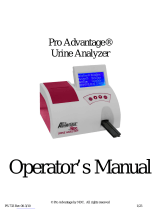 NDC PRO ADVANTAGE User manual
NDC PRO ADVANTAGE User manual
-
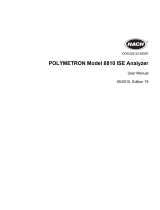 Hach POLYMETRON 8810 User manual
Hach POLYMETRON 8810 User manual
-
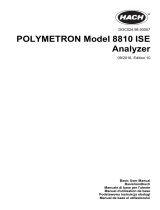 Hach POLYMETRON 8810 ISE Basic User Manual
Hach POLYMETRON 8810 ISE Basic User Manual
-
Maverick iChef BT-600 User manual
-
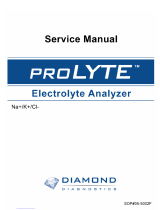 Diamond Diagnostics Prolyte User manual
Diamond Diagnostics Prolyte User manual
-
Korg microSAMPLER Easy Start Guide
-
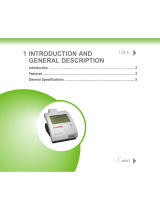 Bayer HealthCare Clinitek Status User manual
Bayer HealthCare Clinitek Status User manual































































































































































































